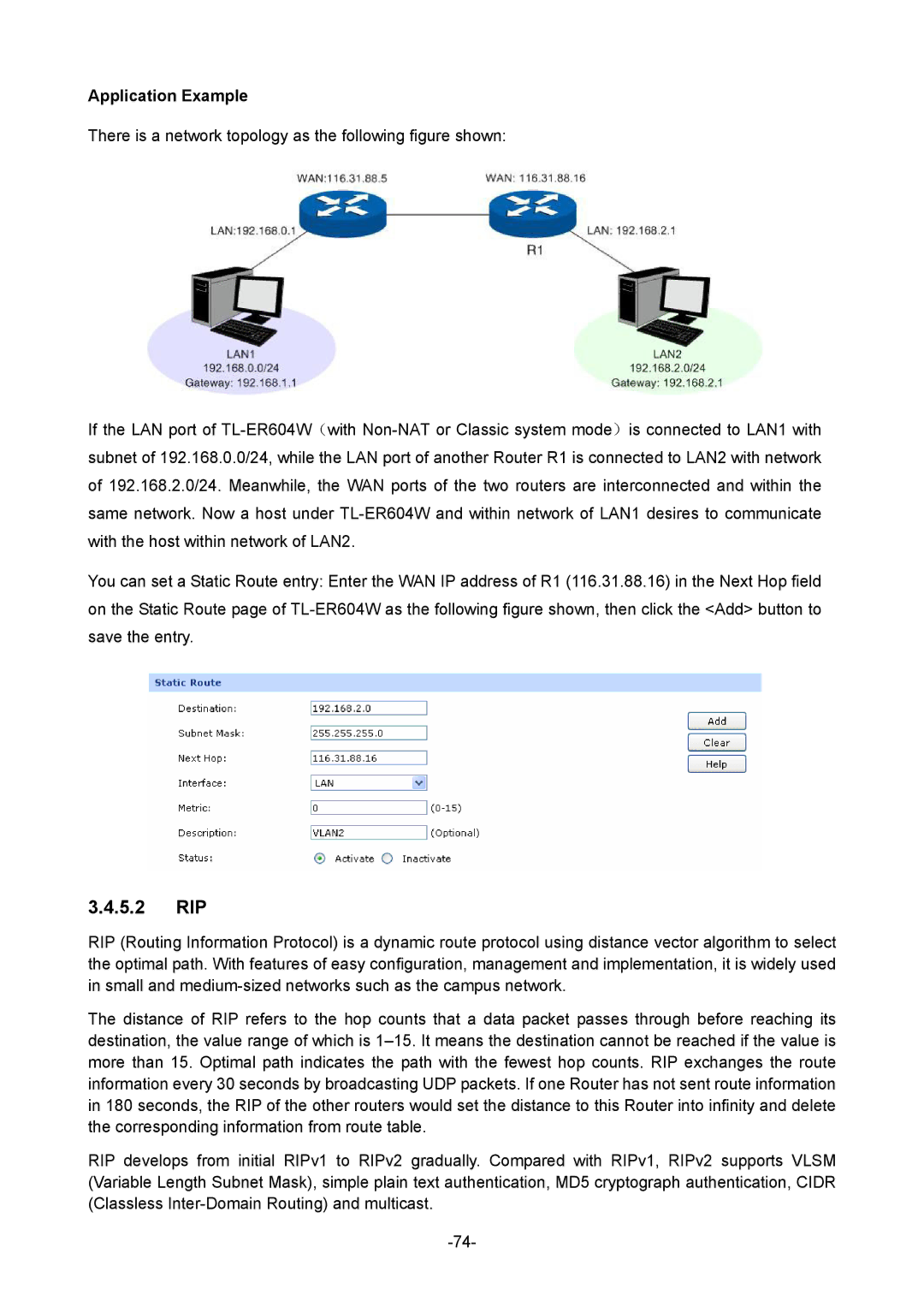Application Example
There is a network topology as the following figure shown:
If the LAN port of TL-ER604W(with Non-NAT or Classic system mode)is connected to LAN1 with subnet of 192.168.0.0/24, while the LAN port of another Router R1 is connected to LAN2 with network of 192.168.2.0/24. Meanwhile, the WAN ports of the two routers are interconnected and within the same network. Now a host under TL-ER604W and within network of LAN1 desires to communicate with the host within network of LAN2.
You can set a Static Route entry: Enter the WAN IP address of R1 (116.31.88.16) in the Next Hop field on the Static Route page of TL-ER604W as the following figure shown, then click the <Add> button to save the entry.
3.4.5.2RIP
RIP (Routing Information Protocol) is a dynamic route protocol using distance vector algorithm to select the optimal path. With features of easy configuration, management and implementation, it is widely used in small and medium-sized networks such as the campus network.
The distance of RIP refers to the hop counts that a data packet passes through before reaching its destination, the value range of which is 1–15. It means the destination cannot be reached if the value is more than 15. Optimal path indicates the path with the fewest hop counts. RIP exchanges the route information every 30 seconds by broadcasting UDP packets. If one Router has not sent route information in 180 seconds, the RIP of the other routers would set the distance to this Router into infinity and delete the corresponding information from route table.
RIP develops from initial RIPv1 to RIPv2 gradually. Compared with RIPv1, RIPv2 supports VLSM (Variable Length Subnet Mask), simple plain text authentication, MD5 cryptograph authentication, CIDR (Classless Inter-Domain Routing) and multicast.
-74-

